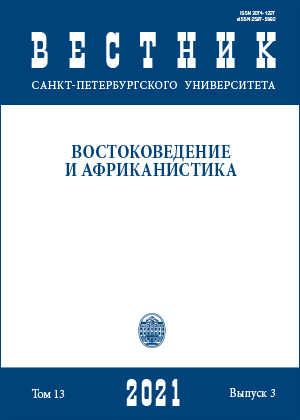Interpretation of Novels and Plays about Song Dynasty Judge Bao in the Chinese Illustrated Woodblock Editions and Popular Prints nianhua
DOI:
https://doi.org/10.21638/spbu13.2021.306Abstract
The article aims to analyze various illustrations of court case stories about Song dynasty judge Bao Zheng (包拯, also named as Bao-gong 包公, Bao Longtu 包龍圖, 999–1062), found in Qing woodblock editions of the novel and popular woodblock prints nianhua, in order to determine how tales about the famous incorruptible judge have been transformed in the visual culture of late imperial times. The authors discovered several woodblock editions of novels about Judge Bao-gong, or Bao Dragon-Design (Bao Longtu), in the St. Petersburg State University library including one illustrated edition and several non-illustrated ones. The State Hermitage and other Russian collections hold an impressive number of popular prints depicting scenes from the traditional drama based on Judge Bao stories, while only several of them refer directly to literary pieces, being mostly scenes from the plays. The protagonists are shown wearing theatrical make-up matching their theatrical character, Judge Bao is recognized by a black-colored face symbolizing his astuteness and uncorrupted nature. The article attempts to find connections between Shi Yukun’s 石玉昆 novel “The Three Heroes and Five Gallants” (Sanxiawuyi 三俠五義, 1879), the traditional drama plays and nianhua prints featuring Judge Bao, which proliferated in the late 19th — early 20th centuries. This research claims to define sources of various types of illustrations and clarify connections between book illustration, popular prints and drama.
Keywords:
Judge Bao’s stories, book illustration, play, popular print nianhua, Russian collection, martial scene
Downloads
References
Downloads
Published
How to Cite
Issue
Section
License
Articles of "Vestnik of Saint Petersburg University. Asian and African Studies" are open access distributed under the terms of the License Agreement with Saint Petersburg State University, which permits to the authors unrestricted distribution and self-archiving free of charge.





